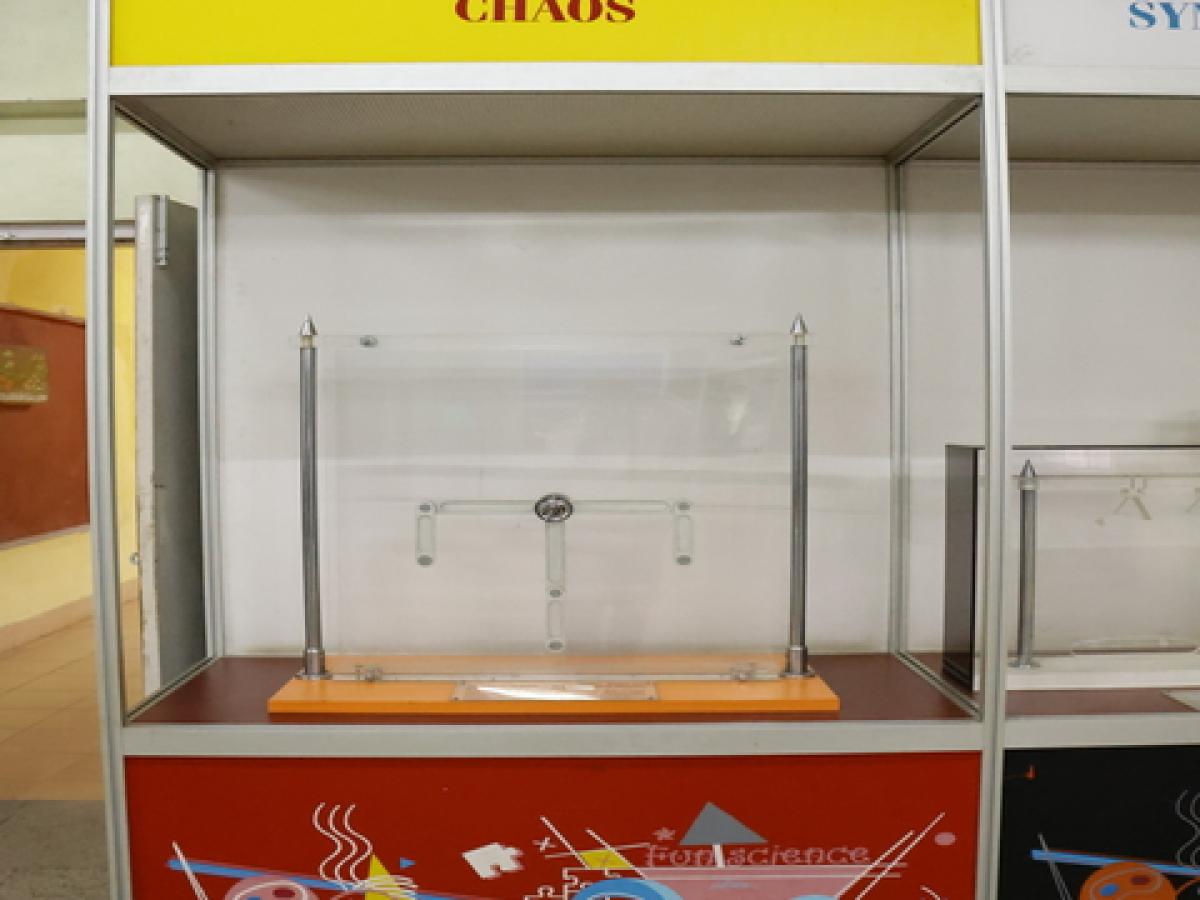Chaos

The chaotic behavior of a pendulum arises from the sensitivity of its motion to initial conditions. A simple pendulum is a classic example of a chaotic system, especially when driven by nonlinear dynamics. While a regular pendulum motion is predictable and follows simple harmonic motion, introducing nonlinear element —such as large amplitudes or irregular forces—can lead to chaotic behavior.
In chaotic motion, small changes in initial conditions can lead to vastly different outcomes over time. This sensitivity to initial conditions is a hallmark of chaos theory. The behavior of a chaotic pendulum can appear random and unpredictable, with the motion being highly sensitive to deviations and imperfections in the
system.
Chaos in pendulum motion can be observed in scenarios like the double pendulum, where two connected pendulums exhibit complex, seemingly irregular behavior. Understanding and studying chaotic systems like the pendulum contribute to our broader comprehension of nonlinear dynamics and the unpredictability inherent in
certain physical systems.
Wing
Category
Feedback
We are actively collecting feedback to improve our website, communication and processes to help students, teachers and curious people so that they can make the best use of the services at Shillong Science Center. Give us your feedback so that we can serve you better.